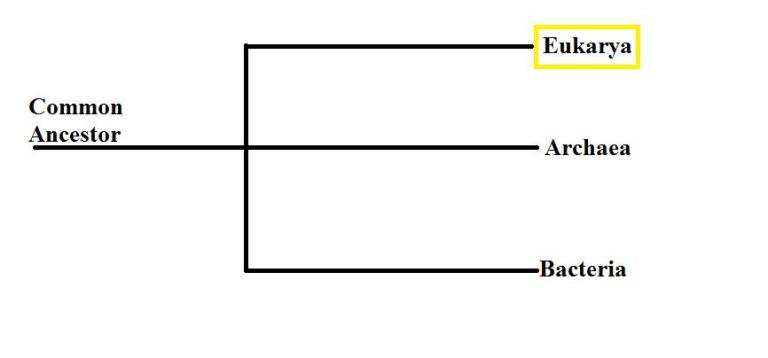Classification
Olea europaea, the olive tree, means olea-olive and europaea-Europe. So Olea europaea is the "olive from Europe." The common name olive comes from the Latin word oliva and the Greek word elaia.
DOMAIN: Eukaryota
KINGDOM: Plantae
PHYLUM: Anthophyta
CLASS: Dicotyledones
ORDER: Scrophulariales
FAMILY: Oleaceae
GENUS: Olea
SPECIES: Olea europaea

The phylogenetic tree above shows the major domains of living organisms based on morphological characteristics such as having or lacking a cell nucleus. They are also based on common genomes which is a cladistic approach to the sorting of organisms.
DOMAIN: Eukaryota
Being a part of the Eukaryota olive trees have a true nucleus in their cells. Eurkayotic in Greek means eu-true and karyon-kernel which refers to the nucleus.
KINGDOM: Plantae
This group contains multicellular eukaryotes that perform photosynthesis. Plantae in Latin means plant.
PHYLUM: Anthophyta
This group contains the flowering plants or the angiosperms. The prefix antho- means flower and the suffix -phyta means phylum.
CLASS: Dicotyledones
Being a part of this order means olive trees are dicot flowering plants. This means the seed has two cotyledons, the flower parts come in multiples of 4 and 5, the stem vascular bundles are in ring, there is secondary growth and finally the leaves venation is net-like. The name means di-two and cotyledones are the specific part of the seed.
ORDER: Scrophulariales
Organisms under this order usually lack stipules or "appendages" that are often found at the base of the small stem of the leaf.
FAMILY: Oleaceae
Opposite leaves that can be either simple or compound without outgrowth on either side of the base of the leafstalk characterizes this family.
GENUS: Olea
Members of this group are native to warm regions with a fruit that is considered a drupe. They can be evergreen trees and shrubs and have small opposite leaves.
SPECIES: Olea europaea
This is the European olive tree that produces the olive and is native to the Mediterranean.

This phylogenetic tree is based mainly on morphological characteristics or characteristics based on anatomical criteria. The organisms listed under species with Olea europaea are the most closely related organisms to the olive tree. The red boxes indicate to which grouping the olive tree belongs to and as you move to the right the groupings become more specific. To learn more about the specifics of the groups the olive tree pertains to see the upper portion of the page. For more information on taxonomy of plants check out the PLANTS Database.
